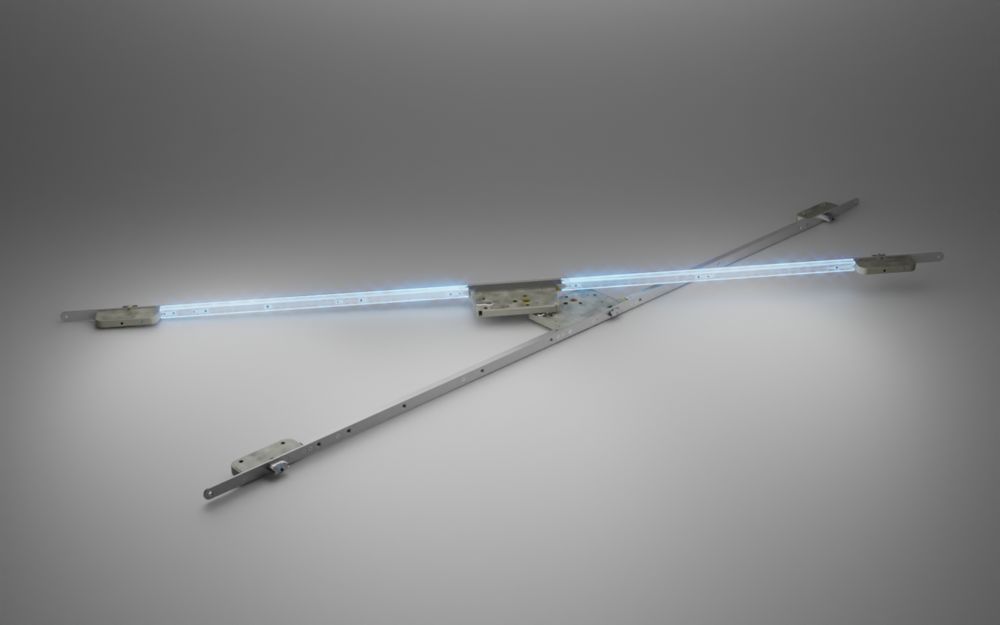SECURY panic multi-point locks with pull rod protection
New requirement
Since September 2021 the standard EN 1627 – EN 1630 (standards for burglar-inhibiting windows, doors and closures) has also included attacks on connecting rods during an attempted burglary. These more stringent requirements particularly apply for all non-locking doors. This particularly affects non-locking escape and rescue route door systems.
In door systems made of PVC or metal, the area around the connecting rod is largely protected from the burglary implement. When the attempted burglary is from the overlap side, the profile material prevents the connecting rod from being exposed to attack. However, the situation is rather different in door systems made of timber. In this case, the timber profile can be broken off or detached which leaves the connecting rod directly open to attack. As multi-point locks for panic door systems are not locked, the connecting rod is not blocked. The multi-point lock can therefore be opened by sliding the connecting rod.
Even greater security at house entrance doors
The design team at the group responded to the more stringent requirements by developing a connecting rod protection which can successfully withstand RC 2 and RC 3 tests for single- and also double-leaf full panic doors and two-leaf doors with a passive leaf. The group is therefore offering a product which is completely unique on the market.
Extension of test certificates
The new SECURY solution provides the door fabricator, and in turn the user, with a secure door construction that also satisfies the new requirements of the standard.
For the first time, door manufacturers can have their own RC test certificates extended without retesting the door and incurring the associated costs. With a suitable test certificate from Gretsch-Unitas, it is possible to verify via a testing institute that the connecting rod is protected and that the main deadbolt is secure against manipulation. This means that, following successful evaluation by a test institute, customers can extend their own RC panic door certificates to include two-leaf full panic door solutions.
Extending the test certificates has the advantage for planners and clients that they can still use tenders for burglar-inhibiting two-leaf panic doors and do not have to modify them for single-leaf doors with passive leafs. Planners can invite tenders for two-leaf panic doors made of timber up to resistance class RC 3 and have the assurance that door fabricators will also be able to implement them.





